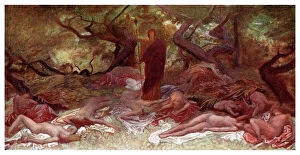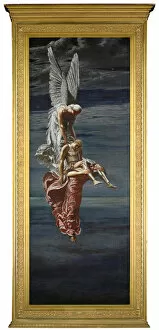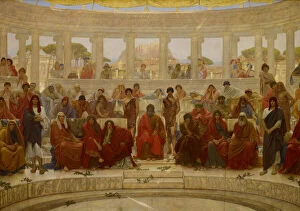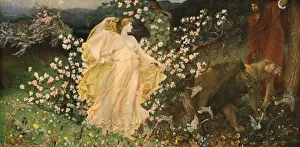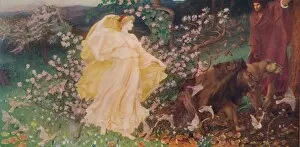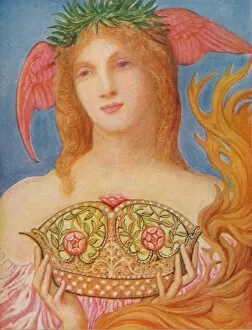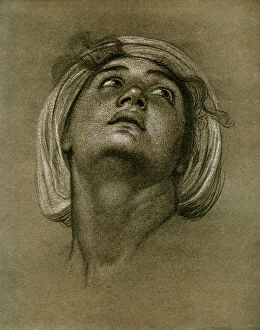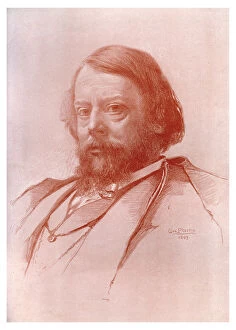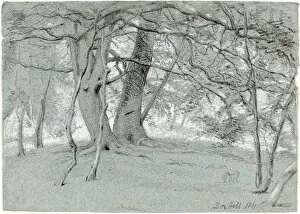Sir William Blake Richmond Collection
Sir William Blake Richmond, a renowned English artist of the late 19th and early 20th century, left an indelible mark on the art world with his diverse range of works
All Professionally Made to Order for Quick Shipping
Sir William Blake Richmond, a renowned English artist of the late 19th and early 20th century, left an indelible mark on the art world with his diverse range of works. From his mesmerizing depiction of Hermes in 1886 by Jonnard to his captivating portrayal of Dionysus and the Maenads in 1901, Richmond's talent knew no bounds. One cannot overlook Sarpedon, created between 1875-76, where he masterfully captured raw emotion on canvas. His Allegorical Female Figure is equally enchanting, showcasing his ability to bring mythical beings to life through oil on panel. Richmond's passion for history shines through in An Audience in Athens During [the Representation of] Agamemnon by Aeschylus from 1884. The attention to detail transports viewers back in time as they witness this historical event unfold before their eyes. In Venus and Anchises, created around c1889-1890 (c1930), Richmond explores themes of love and desire with great finesse. This piece showcases his ability to capture human emotions and relationships beautifully. Similarly, Venus and Anchises from c1889 (c1915) further exemplifies Richmond's mastery over depicting intimate moments between mythological figures. The Crown of Peace from c1882 (1914) is a testament to Richmond's dedication towards promoting harmony and tranquility through art. Its symbolism resonates even today as we strive for peace amidst chaos. Richmond's Study of a Head in 1901 demonstrates his meticulous attention to detail while capturing the essence of human expression. It serves as a reminder that sometimes simplicity can be just as impactful as grandeur. As an esteemed artist hailing from England, Sir William Blake Richmond was recognized for his contributions throughout history. In fact, he was bestowed with the title KCB (Knight Commander Order Bath) along with being elected RA (Royal Academician).


